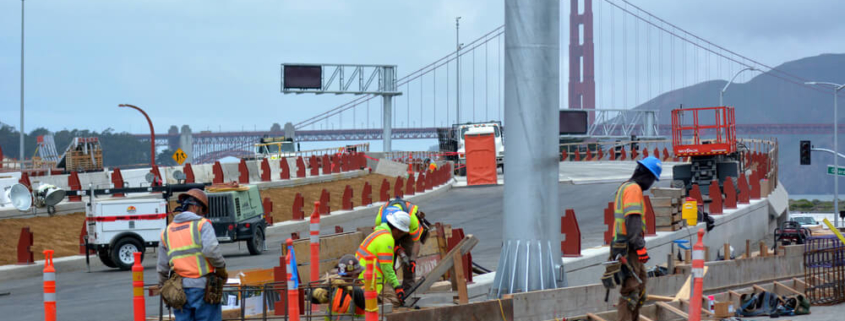OSHA Safety Guidelines for Road Construction Crews
Driving through a construction zone might be frustrating for a driver who’s eager to get to work and avoid traffic, but for construction workers, roadside construction sites are more than mere inconveniences; they’re dangerous. As reported in an article in the Small Business Chron, every eight hours, one fatality occurs and every nine minutes, one injury occurs in a roadwork zone. This means that roadside construction crews are amongst some of the most at-risk workers.
Occupational Health & Safety Administration (OSHA) safety guidelines are designed to keep road construction crews safe. Consider the following about common risks to road construction crews and existing OSHA guidelines, and contact OSHA Injury Attorney directly for more information.
Risks to Road Construction Crews
- Many roadside construction workers work on bridges, tunnels, utility poles, and other surfaces that are above the ground, putting them at risk of suffering a fall from heights. Falls from heights are a leading cause of injury and death for workers in the construction industry, and roadside construction crews are not exempt from these hazards. In addition to falls from heights, roadside construction workers also face the risk of a trip and fall, especially in poor weather conditions or/and when objects in the way make walking more dangerous. With heavy equipment and machinery around–including large vehicles–a slip and fall accident can be deadly.
- Electrical hazards. Another common hazard for road construction crews is that of electricity. Contact with electricity in a roadside work zone can cause fire, explosion, and electrocution. Risks are higher for road construction crews that are working around power lines.
- Machinery and equipment hazards. Heavy machinery and equipment are necessary for almost all roadside construction jobs. Unfortunately, machinery and equipment pose multiple risks when defective or improperly operated, including the risk of caught-in/between injuries, crush injuries, amputation injuries, spinal cord injuries, internal injuries, and traumatic brain injuries.
- Moving vehicle and truck hazards. Moving vehicles, including moving trucks and equipment, are some of the biggest threats to road construction crews. To be sure, over 40 percent of the fatalities that happen amongst roadway construction workers involve motor vehicles, trucks, or equipment. While third-party drivers are sometimes to blame, a large majority of these fatalities involve vehicles and equipment in the work area.
OSHA Guidelines: Staying Safe As a Roadside Construction Worker
OSHA maintains a number of regulations that are designed to keep roadside workers safe. These regulations touch on flagger training and certification requirements (which vary by state), worker safety training, regulations for working around electricity and electrical lines, and more. For example, the agency requires that at all dangerous construction points, legible traffic signs designed in accordance with OSHA standards are used. Employees who are exposed to traffic are required to wear highly visible or reflective apparel. There are also numerous regulations for equipment, both on and off roadside construction sites, including that heavy equipment or machinery that’s suspended must be blocked to prevent falling before employees can work under it, and that all equipment that is left adjacent to a roadway overnight must have lights or reflectors on it.
The Work Zone Safety and Mobility Policies which vary by state, further address roadside workers’ health and safety. For example, Georgia’s Work Zone Safety and Mobility Policy provides guidelines on work zone assessment and management, work zone-related training, and more.
An OSHA Fact Sheet for Work Zone Traffic Safety that provides recommendations for mitigating transportation incidents can be found here. Recommendations include, but are not limited to, using physical barriers to safeguard against motorist intrusion, ensuring that flagger stations are illuminated, using seatbelts and rollover protection when operating equipment/motor vehicles, and making sure that flaggers are properly trained and certified.
The number of regulations and recommendations made by organizations like OSHA is plentiful; there are far too many to capture in a single post. While roadside construction workers can explore the links above for more resources, reaching out to OSHA injury attorneys directly with questions about OSHA safety regulations, what happens if compliance with a regulation is breached, and what to do if you’re injured on the job is strongly recommended.
Contact OSHA Injury Attorney Today
If you have questions about the OSHA regulations that may apply to you and your workspace as a roadside construction worker, OSHA Injury Attorney has answers that you’re looking for. We can also help you to understand your rights and what steps to take if a roadside accident does occur. To learn more about our services and how we can help you, please send us a message through our online contact form. We are here for you.




Leave a Reply
Want to join the discussion?Feel free to contribute!